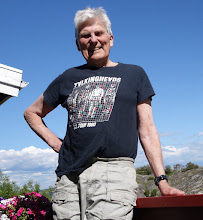Blog Archive
-
▼
2024
(10)
-
▼
April
(10)
- Annika returns as Guardian Angel 4My post pointin...
- A SUNDAY MIRACLE HAS HAPPENED, WE WILL CALL IT FRA...
- The quote below is taken from a New Yorker Magazin...
- Swedish National Hemtjänst - Swedish National Hom...
- International Day With Ann and my Ethiopian promen...
- Guardian Angel III I present Guardian Angel III, ...
- Guardian Angel IIThe light will soon be shining do...
- Document 413 Guardian Angels Do you know som...
- 0n Saying Goodbye to JulieThis is no ordinary Apr...
-
▼
April
(10)
About Me

- Kosmopol
- Linköping, Sweden
- The not-so-simple country boy has turned 92 years old, something never imagines at most of the earlier ages. Will be writing about that here.
Apple if you comment
